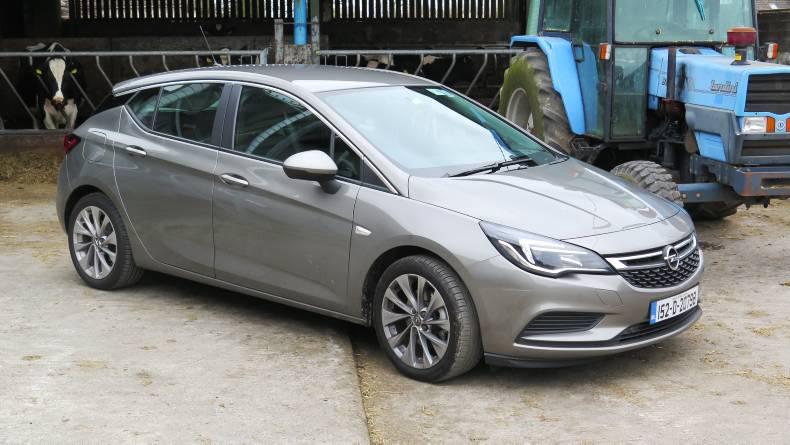There are lots of accolades flying about for the new Opel Astra – and I’ve sort of felt they were justified. The fact that it received the top European car award for 2016 set me thinking that I needed to get in and drive the car for myself for a few days. Those few days came around last week, and I was eager to get out on the road. It was not the busiest week of my life, so I did not cover many of my usual long-range journeys. The driving was probably more like what most people do: stop-start and short runs on rural roads, with the occasional journey to town.
After it all, I just don’t know why I felt a little underwhelmed with the new Opel Astra. It was not that the styling or performance left me wanting more. I just didn’t get as enthused about the car as I had expected. I struggled to understand this; maybe I needed more driving time. While normally when I’ve over 600km on the clock, I feel I know the car’s credentials and get close to its soul. Somehow I just didn’t get attached to the Astra.
That’s why my mixed feelings seem to linger. Why could I not get excited about the best mid-range engine Opel has produced? This new 1.6-litre turbo-diesel unit is a gift in the Opel range and I loved it in the Mokka.
It makes its mark just as well in the new Astra and is way ahead in performance terms than equivalent cars – such as the Volkswagen Golf, Ford Focus and Toyota Auris – when it comes to engine power and torque output. In these measures, it’s clearly ahead of the class and it’s fast to accelerate.
The 1.6-litre Astra is a practical car in terms of ownership costs (€0.24/km), with good economy and low CO2 giving a favourable road tax due to the impressive performance of this engine. While the official economy figure is 27km/litre (76mpg), my test drive gave a figure closer to 20km/litre (30% less, as is expected). And the fact the fuel tank is smaller than the competition means more regular stops. There’s enough torque in the engine to allow the use of higher gears in many cases, helping with economy. And when you want acceleration, it can move at a pace that’s better than the equivalent Focus or Auris.
The car’s dash layout is clear, with a large central screen that allows you to use the Opel Intellilink system to connect to your mobile. Once I hooked up to Apple’s Carplay, the USB cable connection was easy. Then it was a dream to use Google Maps from the phone and have it channelled through the car’s system, a constantly evolving satnav system using your mobile phone. Setup was easy, and I found I used some of the other features, such as talking text, to good effect. It surprised me how quickly I got comfortable with that aspect of the Intellilink. Just a pity there was not more than one USB connection point because I, like many others, travel with a host of devices that need to be charged using a USB port.
The seating is good and firm with good adjustment. Opel fitted a type of iPad folding tray accessory to the headrest support bars of the car; however, the annoying low-level din that it made drew too much of my attention.
The rear seats fold easily to give more boot space, and there are two Isofix mounting points. Rear headroom is good, and entry and access was equally impressive – once I came to terms with the sharp edge to the rear doors. It’s a high-scoring car in the Euro NCAP crash test programme, so that ensures it’s a safer Astra than ever.
The boot space is slightly smaller than the Golf or Focus, while the boot door opens high to give loads of head clearance. The test car also came with a space-saver spare wheel but that’s on the extras list, costing €150.
This Astra came with optional parking sensors (€250). A reversing camera would have been my preference, especially with poor rear visibility and such a large central screen to show the action. The glove box is modest in size, and I had expected more additional storage areas.
Despite not being overwhelmed by the new Astra’s looks, it was a very pleasant car to drive with lots of useful technology included. The old style dials on the dash were a complement or contrast to the Intellilink system, and I liked the car’s computer for economy, range and performance.
Entry prices are competitive for this 1.6-litre diesel car, starting at €21,495 or £16,995 in Northern Ireland. In every sense, this is a very cost-effective car to own, delivering one of the lowest ownership costs I’ve featured in months. Maybe I just need to spend more time getting to love the Astra a little extra.






 This is a subscriber-only article
This is a subscriber-only article



















SHARING OPTIONS: